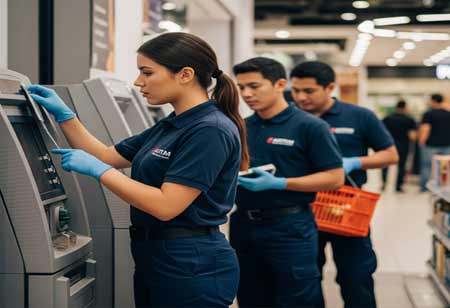THANK YOU FOR SUBSCRIBING

By
Banking CIO Outlook | Tuesday, November 25, 2025
Stay ahead of the industry with exclusive feature stories on the top companies, expert insights and the latest news delivered straight to your inbox. Subscribe today.
FREMONT, CA: In recent years, crowdfunding platforms have emerged as a powerful force, reshaping the landscape of traditional banking and investment. With the ability to pool funds from many people, these platforms have bridged the gap between entrepreneurs and their financial backers. They offer opportunities for individuals, startups, and even established businesses to realize ideas or projects that might not fit within conventional financial frameworks.
Crowdfunding falls into four primary categories: reward-based crowdfunding, where backers receive non-monetary incentives such as products or merchandise; donation-based crowdfunding, which relies on contributions made without financial returns, often for charitable initiatives; equity-based crowdfunding, where investors acquire a stake in the company, functioning as shareholders; and debt-based crowdfunding, commonly known as peer-to-peer (P2P) lending, where contributors provide funds with the expectation of interest payments.
The rise of crowdfunding has significantly disrupted traditional banking and investment models. It has democratized access to capital for entrepreneurs and startups, particularly benefiting those who struggle to secure conventional loans or venture funding. Additionally, it serves as a market validation tool, allowing creators to assess public interest before committing to full-scale production. For investors, crowdfunding offers diverse investment opportunities, enabling participation in niche projects, artistic ventures, and social causes while lowering entry barriers and making investment accessible even with minimal capital. From a broader financial perspective, crowdfunding has reduced dependence on banks, fostering financial autonomy and increasing competition, pushing traditional financial institutions to innovate their services.
Several key trends continue to shape the crowdfunding landscape. Blockchain and cryptocurrencies enhance transparency and security, offering alternative funding mechanisms such as Initial Coin Offerings (ICOs). The geographical expansion of crowdfunding enables global participation, benefiting both developed and emerging markets. Moreover, specialized crowdfunding platforms focused on sectors like healthcare, real estate, and sustainability are gaining traction. Regulatory developments also play a critical role as governments refine laws to balance investor protection with continued innovation.
Despite its advantages—such as direct creator-consumer interaction, speed, flexibility, and the ability to build community support—crowdfunding presents challenges. These include the risk of project failure, potential fraud, and regulatory uncertainties. Nonetheless, as technological advancements and regulatory frameworks evolve, crowdfunding redefines the financial landscape, providing an alternative to traditional funding mechanisms.
Crowdfunding is not merely a financing alternative but a cultural shift in how people approach investment and entrepreneurship. As new technologies and market demands continue to evolve, crowdfunding will likely play an integral role in the future of finance. However, for its full potential to be realized, platforms must maintain transparency, ensure fair regulations, and cultivate trust among contributors.
Crowdfunding has significantly influenced traditional banking and investment models by reshaping access to capital. It empowers a diverse range of creators and investors, fosters innovation, and fuels economic growth. While challenges remain, the future of crowdfunding holds immense possibilities for a more inclusive and vibrant financial ecosystem.
THANK YOU FOR SUBSCRIBING
Be first to read the latest tech news, Industry Leader's Insights, and CIO interviews of medium and large enterprises exclusively from Banking CIO Outlook
I agree We use cookies on this website to enhance your user experience. By clicking any link on this page you are giving your consent for us to set cookies. More info



